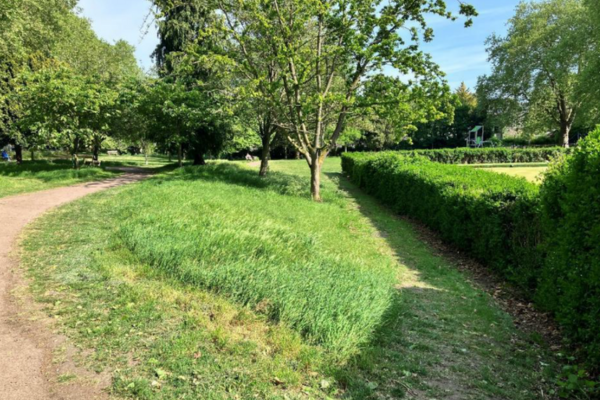The Application for Approval of Reserved Matters form should be used after an outline planning permission has been granted.
A reserved matters application deals with some or all of the outstanding details of the outline permission, namely:
- appearance - aspects of a building or place which affect the way it looks, including the exterior of the development
- means of access - covers accessibility for all routes to and within the site, as well as the way they link up to other roads and pathways outside the site
- landscaping - the improvement or protection of the amenities of the site and the area and the surrounding area, this could include planting trees or hedges as a screen;
- layout - includes buildings, routes and open spaces within the development and the way they are laid out in relations to buildings and spaces outside the development;
- scale - includes information on the size of the development, including the height, width and length of each proposed building.
The details of the reserved matters application must be in line with the outline approval, including any conditions attached to the permission. Where the outline planning permission contains a condition or conditions requiring that specific information is submitted as part of a reserved matter, when that reserved matter is submitted the required information must also be provided. If your proposals have changed in any way, you may need to reapply for outline or full planning permission.
Requirements
The list below details supporting documents that may need to be submitted as part of your application. Please refer to each section below in order to determine whether or not you need to submit it as part of your application.
Application form
The application form is available on the Planning Portal. To access it, sign in, select ‘start new application’, then select the desired application.
When required
Always required.
A completed form is always required (one copy of all application documents must be supplied if submitted by post).
What is required
Please ensure that you have completed every section of the application form before submitting. Where sections or questions are not relevant please state this on the form.
Source, policies and references
National validation requirement.
Fee
When required
This is always required, unless covered by an exemption.
Common exemptions
- is for alterations, extensions etc. to a dwelling house for the benefit of a registered disabled person (please provide evidence from the DWP that the applicant is registered as being disabled);
What is required
Current national fees can be found on the Planning Portal.
- How to calculate fees
- Planning Portal's fee calculator
- Guidance: GOV.UK: Fees for planning applications
Source, policies and references
National validation requirement.
Location plan
When required
Always required.
What is required
This must be an up-to-date Ordnance Survey-based location plan at an appropriate scale, usually 1:1250 or 1:2500. In the case of large sites other scales may be appropriate.
The plan must show:
- At least two named roads and all surrounding buildings or land (unless this would require a plan greater than a scale of 1:2500)
- The application site (the whole planning unit)
- A north point
- The scale clearly identified
The plan used should:
- Show OS Crown copyright
- Not to be copied from existing OS mapping, if using hand drawn maps such as standard streets
- Show the correct licence number if you wish to print or copy maps for applications
The application site boundary must be edged clearly with a red line. It should include all land necessary to carry out the proposed development - for example, land required for access to the site from a public highway, visibility splays, landscape, car parking and open areas around the building. A blue line should be drawn around any other land owned by the applicant, close to or adjoining the application site.
Source, policies and references
National validation requirement.
Environmental impact assessment
When required
If the original EIA or part of it is out of date.
What is required
If your development proposal is considered to be EIA development, or requires supporting EIA topic/s to be updated, then an Environmental Statement (ES) which assesses the likely significant environmental effects of the proposed development will need to be prepared and submitted as part of the planning application. Information for inclusion in an Environmental Statement is set out in Schedule 4 of the Regulations. The scope of any ES should be agreed by the local planning authority in a formal scoping opinion.
Heritage statement
When required
Development affecting a heritage asset. Heritage assets are buildings, monuments, sites, places, areas or landscapes which are significant because of their historic interest.
Designated heritage assets include:
- World Heritage Site
- Scheduled Monument
- Listed Building
- Registered Park and Garden
- Conservation Area
For new development, consideration should be given to the potential of archaeological assets.
What is required
The level of information or investigation required to support a proposal that could impact on a heritage asset needs to be proportionate to the significance of the heritage asset and the potential impact of the works proposed. Pre-application meetings are strongly recommended.
As a minimum, statements will be required to identify heritage assets and demonstrate how proposals have preserved or enhanced their significance.
Applications for works to a heritage asset to address climate change should include the information set out in Policy 63 and its supporting text.
Source, policies and references
National validation requirement.
- CLP Policies 61, 62, 63 & Appendix G: Local heritage assets criteria and list
- NPPF Chapter 16
- NPPG - Conserving and enhancing the historic environment
- Listed building descriptions
- Conservation Area appraisals and management plans
- Suburbs and approaches studies
- Cambridgeshire Historic Environment Record
- Historic England (2018) Energy efficiency and historic buildings: How to improve energy efficiency
- Further guidance on works to heritage assets to address climate change will be included in the updated Greater
Fire safety statement
When required
Required where a building contains two or more dwellings or educational accommodation and has a height of 18m or more, or 7 or more storeys whichever is reached first.
What is required
Fire statements must be submitted on a form published by the Secretary of State (or a form to similar effect) (see Draft fire statement form) and contain the particulars specified or referred to in the form, which includes information about (not exhaustive list):
- the principles, concepts and approach relating to fire safety that have been applied to each building in the development the site layout
- emergency vehicle access and water supplies for firefighting purposes
- what, if any, consultation has been undertaken on issues relating to the fire safety of the development; and what account has been taken of this
- how any policies relating to fire safety in relevant local development documents have been taken into account
Source, policies and references
National validation requirement.
Surface water drainage strategy
When required
A surface water drainage strategy is required for all scales of development where surface water will be created or affected.
What is required
The means of and changes to surface water drainage for householder applications must be shown on the submitted plans. For all other applications, the key information that a surface water drainage strategy must contain is:
- How the proposed surface water scheme has been determined following the drainage hierarchy
- Pre-development runoff rates
- Post development runoff rates with associated storm water storage calculations (see policies referenced below for specific runoff requirements)
- Discharge location(s)
- Drainage calculations to support the design of the system
- Infiltration testing to BRE365 if the proposals recommend infiltration for surface water disposal
- Drawings of the proposed surface water drainage scheme including sub catchment breakdown where applicable
- Maintenance and management plan of surface water drainage system (for the lifetime of the development) including details of future adoption
- Completed drainage proforma included within the Cambridgeshire Flood and Water SPD - the applicant must ensure that the surface water strategy contains the appropriate level of information in relation to the points covered in the proforma.
Sustainable Drainage Systems (SuDs) must be shown on all relevant plans submitted.
Sustainability statement and checklist
When required
All scales of development.
What is required
A sustainability statement and checklist should outline the approach to:
- Adaptation to climate change
- Climate Change mitigation, including carbon reduction
- Water management
- Site waste management
- Use of materials
- Other issues including biodiversity and ecology; land, water, noise and air pollution; transport, mobility and access; health and wellbeing; and culture, heritage and the quality of built form, including the efficient use of land.
The statement should be integrated within the Design and Access statement so that it is clear that sustainable design and construction has been integrated into the overall design.
Source, policies and references
Local validation requirement.
- CLP Policy 28
- Greater Cambridge Sustainable Design and Construction SPD 2020, particularly Appendix 1
Biodiversity Net Gain assessment
When required
You must demonstrate how your major development site meets the minimum mandatory requirement of 10% biodiversity net gain over the pre-development value of the site.
The minimum information that you must submit is set out in paragraph 9 of the draft biodiversity net gain planning practice guidance.
What is required
Some of these requirements are included in the standard application form available on the Planning Portal. With your application, you must include a completed statutory biodiversity metric and a scaled plan. Please submit biodiversity metric in Excel format.
Source, policies and references
National validation requirement.



